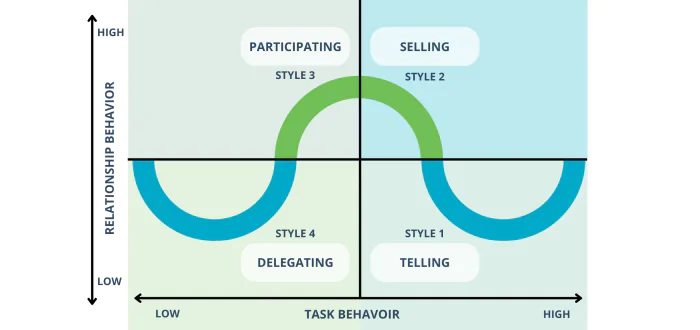Situational Leadership
In the dynamic world of leadership and management, one concept has consistently proven its effectiveness - Situational Leadership. This adaptable approach has gained widespread recognition for its capacity to address the diverse challenges that arise in different scenarios. Whether in corporate boardrooms or educational settings, Situational Leadership provides leaders with a powerful framework to guide their teams toward success.
Understanding Situational Leadership
Situational Leadership, developed by Paul Hersey and Ken Blanchard in the late 1960s, is a leadership theory that underscores the importance of flexibility in leadership styles. At its core, Situational Leadership acknowledges that a one-size-fits-all approach to leadership is inadequate. Instead, effective leaders must adapt their approach to suit the unique needs of their team members and the circumstances they face.
The foundation of Situational Leadership rests on the belief that there is no universally optimal leadership style. Rather, leaders should assess their team member's readiness and competence and tailor their leadership style accordingly.
This adaptability is achieved by combining two crucial dimensions:
- task behavior (which involves directing and guiding)
- relationship behavior (focused on supporting and nurturing)
These dimensions give rise to four distinct leadership styles:

- Telling:
In this style, leaders offer explicit instructions and closely supervise their team members, especially when they are inexperienced or lack the required skills. - Selling:
When team members possess some competence but lack confidence or motivation, leaders adopt a selling style. They not only provide guidance but also seek to persuade and motivate their team. - Participating:
As team members become more competent and confident, leaders can transition into a participating style. Here, leaders encourage collaboration and decision-making within the team, offering support as needed. - Delegating:
When team members are highly competent and motivated, leaders can delegate most responsibilities and focus on a supportive role (e.g. Servant Leadership), allowing team members to take the lead.
Real-World Applications
Situational Leadership finds applications in various fields, spanning from business to education and healthcare. Let's explore how this adaptable approach can be beneficial in different contexts:
- Business Leadership:
In the corporate world, market conditions and employee skills often change rapidly in this VUCA-world. Situational Leadership allows leaders to adjust their management style to accommodate these fluctuations, ensuring teams remain productive and engaged. - Education:
Educators employing Situational Leadership can cater to the diverse learning needs of their students. They can switch between instructive teaching for beginners and facilitating independent learning for advanced students. - Healthcare:
Healthcare professionals can use Situational Leadership to adapt their communication and decision-making styles when dealing with patients, depending on their health literacy and emotional state. - Project Management:
Project managers can benefit from Situational Leadership by tailoring their approach to the project team's expertise and the complexity of the tasks involved.
The Future of Situational Leadership
In a world characterized by constant change and unpredictability, leadership cannot be a one-size-fits-all endeavor. Situational Leadership offers a valuable framework that empowers leaders to adapt their approach to the unique needs of their team members and the context in which they operate. By combining task behavior and relationship behavior in a flexible manner, leaders can inspire trust, maximize productivity, and foster the growth and development of their teams. As we continue to navigate the complexities of leadership in the 21st century, Situational Leadership remains a timeless, lean and indispensable tool for success.
